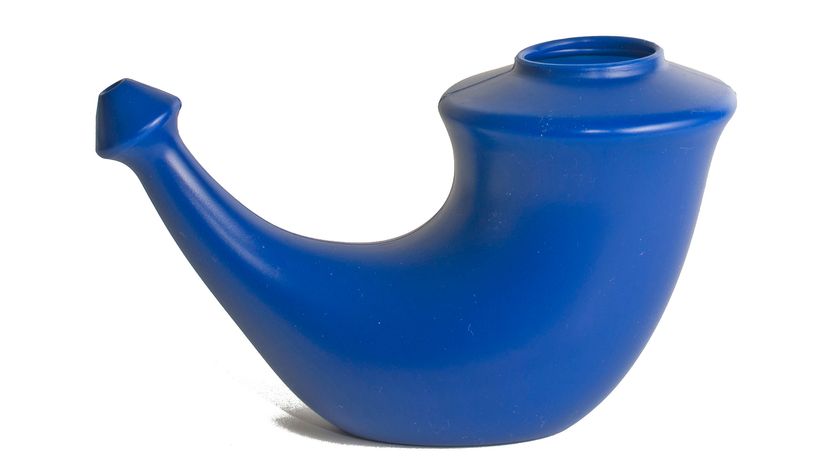If you've purchased salt in a kit along with your neti pot, follow the package instructions. You can also make your own saline solution. Use a ratio of one-quarter to one-half teaspoon of non-iodized salt per eight ounces of warm sterilized water, or one teaspoon of non-iodized salt per pint of water if you're doubling the amount of solution. Mix until the salt dissolves.
The key to safe nasal irrigation is to use sterile or distilled bottled water — it is inexpensive and by far the safest option. However, tap water that has been boiled for 3-5 minutes and cooled to a lukewarm temperature will also work. Do not put boiling water into the neti pot.
It's best to do the irrigating over a sink, preferably in front of a mirror. Once you've poured your saline solution into the neti pot, lean slightly over the sink and shift your head sideways so that one nostril is elevated above the other. While breathing through your mouth, raise the neti pot and calmly insert it through the upper nostril. If your head is tilting down to your left, this will be your right nostril. If your head is titling down to your right, this will be your left nostril.
Take care to keep your forehead level with your chin and avoid leaning too far forward. Otherwise, the water may not exit properly or could accidentally flow out through your mouth.
After you've inserted the neti pot, water should flow from the pot into the upper nostril and out the lower nostril without any delay. Remove the pot once emptied. Lightly exhale and blow your nose to clear it of any extraneous mucus or solution. Refill the pot with saline solution and repeat the process using the other nostril.
While many neti pot users rinse on a daily basis, consult your doctor about how often is appropriate for you.



